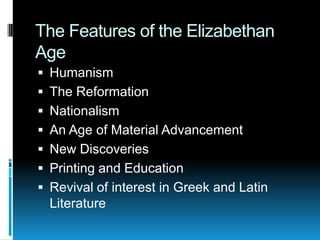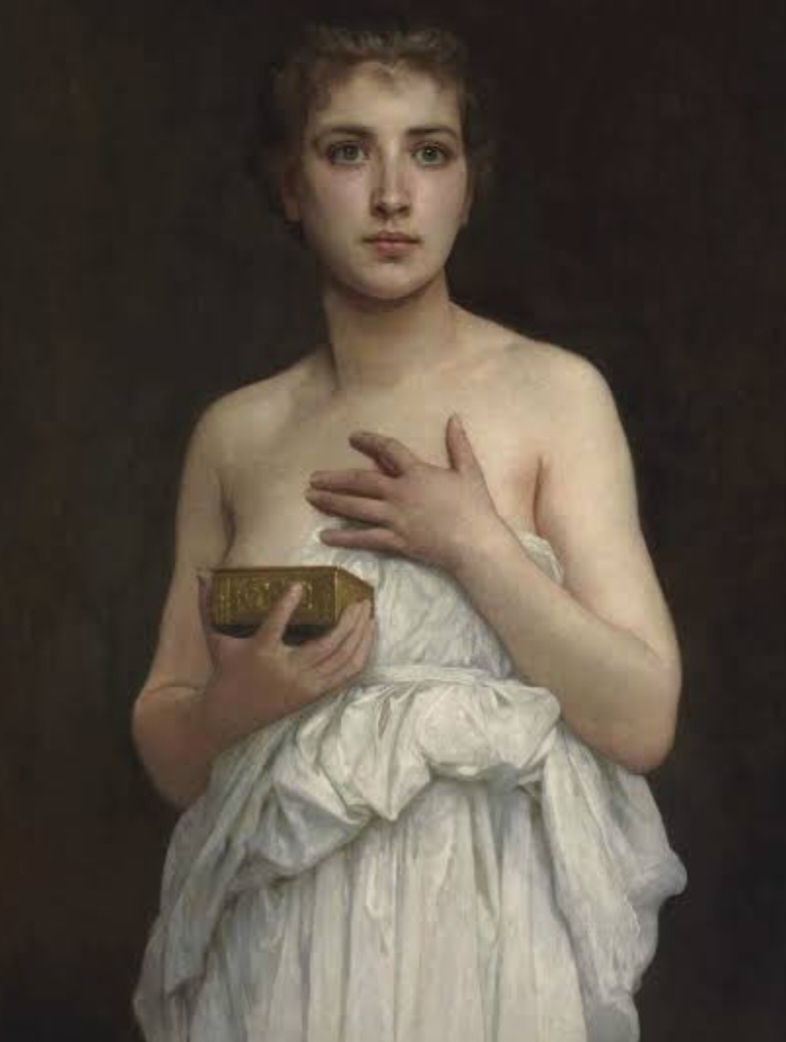Hello readers ! I am Divya jadav student of English literature. In this blog ,I want to share some general characteristics of Elizabethan age and Neo- classical age.
The Elizabethan Age -(1550-1620)
The Elizabethan Age is the time period associated with the reign of Queen Elizabeth I (1558–1603) and is often considered to be a golden age in English history. It was an age considered to be the height of the English Renaissance, and saw the full flowering of English literature and English poetry.
"The Golden Era in literature "
GENERAL CHARACTERISTICS OF THE AGE:
Characteristics of the Elizabethan Age (1558-1603) The age of Queen Elizabeth comprising the latter half of the 16th centuryis the golden age in the history of the English people. It was an age in which the minds of the people were set free from religious persecution, from fear ofpoverty and starvation and from the fear of foreign invasion. It was an era ofsocial, political and religious peace. It was also an era of great adventure, traveland discovery. It was the golden age of literature, an age in which theRenaissance could come to full flowering.
Characteristics:
1)social and political peace
2) Imperialism
3) Religious tolerance
4) social contentment
5) Enthusiasm
Let's ,here i discuss the all above characteristics one by one
1) social and political peace :-
Queen Elizabeth's wise policy of moderationresulted in social and political peace. Queen Elizabeth was a true child of theRenaissance and the people worshipped her for they "rightly saw in her theincarnate spirit of the nation and the age".
2) Imperialism: -
England emerged as a naval power and there was an upsurge ofmaritime activity. The exploits of John Hawkins, Walter Raleigh and FrancisDrake fired the imagination of the people. The defeat of the Spanish Armada in1588 made England the supreme naval power in Europe. The East IndiaCompany was founded in 1600 and thus were sown the seeds of Britishimperialism. In the 16th century the British began to establish overseas colonies.
3) Religious tolerance:-
The most characteristic feature of the age was the comparative religious tolerance, which was due largely to the queen's influence.
With religion tolerance and freedom of thinking, Englishmen were ready to have the taste of literature. Great writers emerge from this freedom and inspiration.
4) social contentment:-
It was an age of comparative social contentment, in strong contrast with the days of Langland. The rapid increase of manufacturing towns gave employment to thousands who had before been idle and discontented.
The increase of wealth, the improvement in living, the opportunities for labor, the new social content--these also are factors which help to account for the new literary activity.
5) Enthusiasm:-
It is an age of dreams, of adventure, of unbounded enthusiasm springing from the new lands of fabulous riches revealed by English explorers.
There was a flow of imagination and thinking in a positive manner.
Poets of this age were creating poems which became young forever.
Cabot, Drake, Frobisher, Gilbert, Raleigh, Willoughby and Hawkins expored new earth to men's eyes.
Dreams and deed were going parallel in the age of Elizabethan.
THE NEO-CLASSICAL AGE -(1700-1800)
Neoclassicism (also spelled Neo-classicism. was a Western cultural movement in the decorative and visual arts, literature, theatre, music, and architecture that drew inspiration from the art and culture of classical antiquity.
Thus the combination of the terms 'neo,' which means 'new,' and 'classical,' as in the day of the Roman and Greek classics.
This was also the era of The Enlightenment, which emphasized logic and reason. In fact, the neoclassical period ended in 1798 when Wordsworth published the Romantic 'Lyrical Ballads'.
GENERAL CHARACTERISTICS OF THE AGE:
There is various kinds of general characteristics we find in this era. So , here i describe some characteristics including.
AUGUSTAN AGE:
This age is also called Augustan age. Pope , Addison , swift, Jonson and burke, the modern parallel to Horace, Virgil, Cicero and other brilliant writers who made Roman literature famous during the region of emperor Augustus.
Characteristics:-
1) Influence of the classics
2) The classical values
3) Imitation and Nature
Here, we discusse the general characteristics one by one.
1) Influence of the classics:-
Writers looked back to the ideals and art forms of classical time.political and social affairs to they were guided by the wisdom of past.
2) The classical values:-
The neo-classicists emphasis upon classical values of objectivity and impersonality, balance, harmony, moderation and proportion.
3) Imitation and Nature:-
Two of concepts centrel in Neo classical literary theory and practice were imition and nature which were intimately related.
Nature: the harmonious and hierarchical order of the universe, including the various social and political hierarchies within the world.
Imitation:-
The imitation of classical modela, especially the homer and Vergil.
Question: who is your favourite writer and favourite text from the Neo classical age?
How he/she different from the writers of Elizabethan age and Romantic age?
Answer - my favourite writer is JOHN LYLY, and his prominent work is THE WOMEN IN THE MOON. Here i discuss depth about the John LYLY and his contribution .
JOHN LYLY:
About John LYLY :
Born: 1553, Kent, United Kingdom
Died: November 1606, London, United Kingdom
Education: University of Oxford, University of Cambridge, Magdalen College, The King's School
Language: Early Modern English
Literary movement: English Renaissance.
THE WOMEN IN THE MOON
The play is set in the world of Greek mythology, at the time of the very beginning of the human race, when the first woman was not yet created. A personified goddess of Nature, accompanied by Concord and Discord ("For Nature works her will from contraries"), descends to a pastoral Earth inhabited by four shepherds.
QUESTION:- DISCRIBE ANY ONE THING ABOUT THIS AGE WHICH LOOK UPTO.
Answer: -
The Neo-Classical Age, also known as the Enlightenment period, is often admired for its emphasis on reason, logic, and the pursuit of knowledge.This era celebrated the ideas of individual rights, freedom of thought, and the importance of science and rationality in shaping society.
The Neo-Classical Age, which spanned roughly from the late 17th to the late 18th century, is famous for its emphasis on reason, rationality, and order.
It marked a departure from the previous Baroque era and was characterized by a focus on classical art, literature, and architecture, inspired by the aesthetics of ancient Greece and Rome.
This period also saw the rise of Enlightenment philosophy, advocating for individual rights, liberty, and scientific inquiry.







